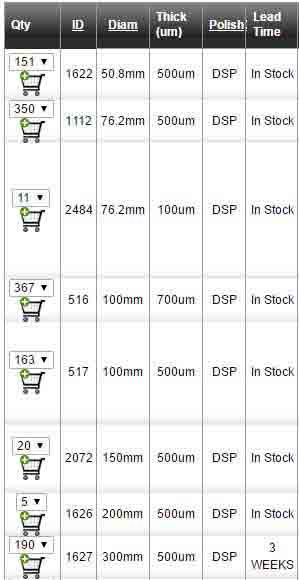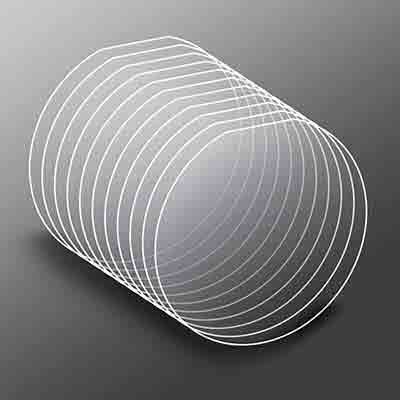Borofloat Glass Wafers for Research & Production
Borfloat 33 Glass Wafers
Our borofloat wafers have an excellent mirror-like surface with a high degree of flatness. Borfloat's outstanding optical properties make it a favorite among researchers the world over.
Get Your Quote FAST!
Borofloat Glass Benefits
BF33 glass is a good material for CE because it is chemically inert and doesn't adsorb reagents or chemicals like PDMS. Glass is also optically transparent with very low fluorescence background so when coupled with laser induced fluorescence (LIF) high sensitivity detection of targeted analytes can be realized. However, glass fabrication is more demanding than many soft fabrication techniques leading to the temptation to cut corners in the fabrication process thereby producing low quality glass devices. The purpose of this paper is to restate proper glass fabrication techniques using the latest available apparatus and procedures to achieve the highest possible quality devices. Three decades have passed since CE systems were first integrated on a planar glass chip using photolithography techniques and used to separate a mixture of fluorescent dyes and later to separate fluorescently labeled amino acids. Since then, much more advanced and complex CE devices have been fabricated from glass and further integrated into lab-on-a-chip analytical systems to perform high speed and high resolution electrophoretic separation for an expanding range of applications. Key work includes devices for DNA fragment separations, DNA sequencing, PCR product amplification and analysis, clinical diagnostics and pathogen detection, cell sensors and forensic identification.
BF33 Wafer Handling
A wafer handling vacuum wand is a device used to pick up wafers off of a wafer cassette and place it into a wafer carrier. The vacuum wand uses suction to pick up multiple wafers at once, so the operator does not have to manually pick up each wafer individually. The vacuum wand is placed on the back side of the wafer and close to the edge so that the operator can pick up more than one wafer at a time. Manual tweezers are an alternative option to picking up wafers. To transfer the wafers from one cassette to another, match up their pin and holes to mate the two cassettes and flip over to transfer from one into the other. Spin-rinse dry is the preferred way to dry wafers without touching them. If spin-rinse dry is not an option, wafers can be dried with a nitrogen (N2) gun. In order to do this, first blow nitrogen gas over the back side of the wafer and place it with its dried face down on a cleanroom wiper (Technicloth) and continue to blow-dry the front face until there are no more water residues on the surface
Buy as few as one Borofloat Wafer!
We can sell as few as one wafer and even dice that one wafer into any dimension. Buy one wafer our thousands and get the best price on the market.


